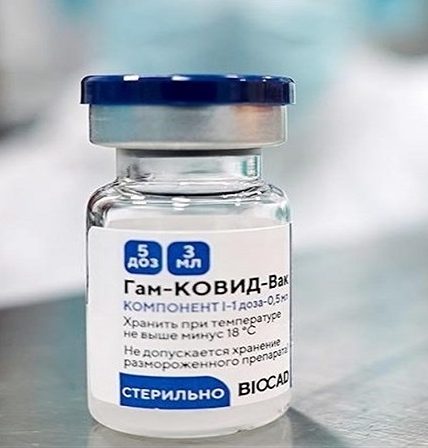February 26, 2021

The Islamic Republic has begun vaccinating the public against the coronavirus using a Russian-made vaccine while it continues to test three homemade vaccines.
The government gave its first vaccination jab considerable publicity on February 9, while ignoring the fact that this was two months after vaccinations began in the West.
Iran’s Health Ministry effectively ignored Khamenehi when it later announced it would import the AstraZeneca vaccine. This is a vaccine developed by researchers at the University of Oxford working with Astra-Zeneca, a firm created in 1999 through the merger of Swedish pharmaceutical firm Astra AB and Britain’s Zeneca Group and is the only “British” vaccine.
The Health Ministry sidestepped Khamenehi by announcing it was importing a vaccine made in South Korea—which is one of the sites where the AstraZeneca vaccine is manufactured. Dr. Minoo Mohraz, a key figure in Iran’s fight against the coronavirus, also side-stepped Khamenehi by calling AstraZeneca a “Swedish company.”
Three vaccines are currently being tested in Iran. Officials say they expect the first, Cov-Iran Barekat, to be available for public use late in the spring, with the second, Razi Covo-Pars, coming on board by mid-summer. The third vaccine is being developed by the Pasteur Institute. The second vaccine comes in three doses—the first two injected and the third inhaled.
The regime is now boasting that Iran will soon become a major global hub for the manufacture of coronavirus vaccines. Health Minister Saeed Namaki said February 14, “Iran will turn into an important vaccine production hub for the world in the next few months. We will produce the best vaccines in the world in the very near future.”
Hojjat Niki-Maleki, of the Headquarters for Executing the Orders of the Imam, which owns the firm developing the Cov-Iran Barekat vaccine, said two Arab countries have already ordered that vaccine. However, he did not name them.
Iran received its first foreign vaccine February 4 in an air shipment from Russia. The Russian Sputnik V vaccine was ordered before it had been approved by any country, prompting some criticism within Iran. But just days later, The Lancet, an international medical journal, published a report adjudging Sputnik V to be safe and effective. The criticism in Iran then ended.
That first shipment of Sputnik V was the first 120,000 doses of a purchase totaling 2 million doses. The government has said it plans to import 17 million doses through the World Health’s Organization’s COVAX program and millions more in direct purchases from manufacturers.
It has stopped asserting that the United States is blocking its purchases through the sanctions program.
Sputnik V is now being administered to frontline health workers. After that, it will be available to other medical personnel, residents of nursing homes and those aged over 65, the health minister has said. It is available at 635 hospitals around the country. The first person to receive the injection was Parsa Namaki, the teenaged son of Health Minister Namaki.
Officials continue to disparage Western vaccines for allegedly having harmful side effects. The Iranian media regularly carry stories saying large numbers of vaccine recipients abroad have suffered side effects, without saying if the side effects are serious and life-threatening or just such things as soreness at the point of injection or dizziness for several minutes after the injection, which are common but not serious.
Any death abroad of someone who had received a vaccine is reported in Iran as a death from the vaccine. It isn’t clear why the regime is on a campaign to disparage Western vaccines, though some speculate it is because of Khamenehi’s ban on importing US and British vaccines.